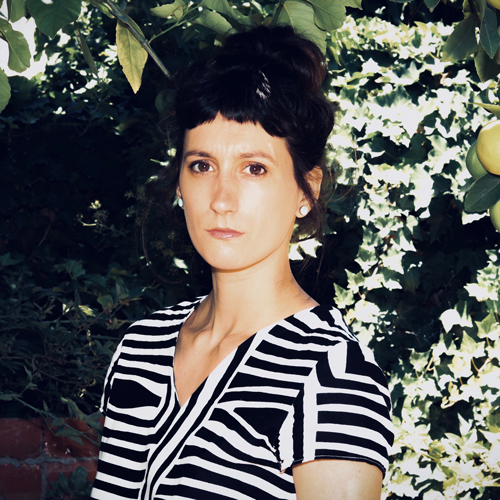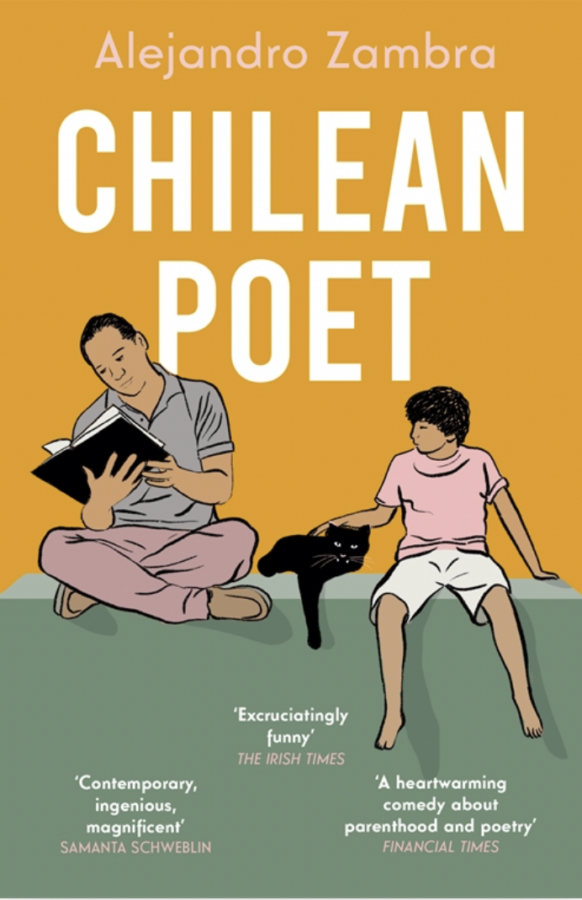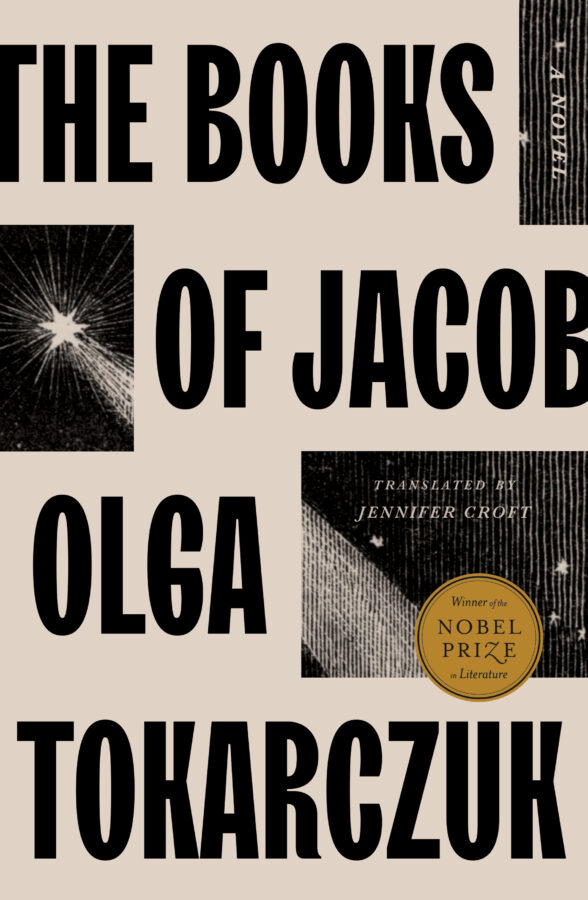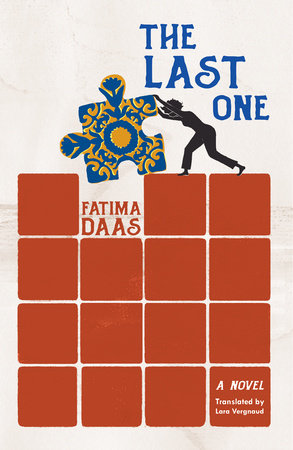Back in 1976, the Franklin Library published a luxurious leather-bound edition of Kurt Vonnegut’s novel Slapstick. Inside the cover, the author had penned a ‘special message’ to his readers. ‘The Sermon on the Mount,’ he wrote,
increased the seeming dignity of its Author and of all mankind. So did The Iliad and Hamlet and The Inferno. Such examples are rare. It was for them that fancy bindings like this one were first designed. So I am bemused at having my mind junk packaged this way. It belongs in cardboard bindings, mixed in higgledy-piggledy with sex books and science fiction and nurse stories and gothic novels – on racks in bus stations and post exchanges. But here we are. ‘If they could only see me now,’ as the saying goes. And I laugh.
Vonnegut’s disbelief seems impishly modest in hindsight, considering the lofty position he now occupies within the contemporary American canon. His point, however, is even more salient today, when the divisions between ‘high’ and ‘low’ culture (whether in literature, theatre, music, visual art or cinema) have become increasingly blurred. This is not an entirely new phenomenon, of course. The shifting and arbitrary nature of these divisions has been exposed periodically throughout history, by artists as diverse as William Shakespeare, Andy Warhol, Louis Armstrong and Charles Bukowski. Vonnegut himself invites us to disregard – or, at the very least, to unwrap with a cynical touch – the packaging in which a given artist’s ‘mind junk’ is sold.
The evocation of Bukowski is far from gratuitous. From Vonnegut’s ‘post exchange’ pulp fiction to Hank Chinaski’s vicious Post Office ramblings, the twentieth century is replete with writers intent on transcending the highbrow/lowbrow dichotomy. Some of the most interesting of these, within both Anglo and Latin America, form part of a cohort known collectively (thanks to Bill Buford) as the ‘Dirty Realists.’
The term ‘dirty realism’ was coined by Buford in 1983, in reference to the short fiction of what he thought of as ‘a new generation of American authors.’ Among them were Raymond Carver, Tobias Wolff, Richard Ford, Elizabeth Tallent and Jayne Anne Phillips. In the space of a few years, Granta magazine (then edited by Buford) dedicated two issues to this newfangled literary genre: Granta 8: Dirty Realism (1983) and Granta 19: More Dirt (1986). Despite Buford’s emphasis on the genre’s apparent novelty, dirty realism draws upon deep reservoirs of literary revolt. The French realists of the late nineteeth century are, nominally, the movement’s most obvious antecedents, although something akin to a ‘bastard high style’ (to borrow Francis Spufford’s term) harks all the way back to François Villon and his fruitful marriage of ‘gutter argot and the language of the Schools’. The realist rejection of romanticism is also mirrored in the work of proto-existentialist writers like Dostoevsky, whose wretched Underground Man might well be the considered the original dirty realist antihero.
In his introduction to Granta 8, Buford describes the frank, pared-down writing of Carver and his generation as curious, comical and disturbingly detached. The scope of their fiction was minimal, limited to microscopic examinations of commonplace mediocrity that, in some sad and subtle manner, succeeded in representing ‘a whole culture and a whole moral condition.’ These were ‘strange stories,’ Buford wrote;
unadorned, unfurnished, low-rent tragedies about people who watch day-time television, read cheap romances or listen to country and western music… They are from Kentucky or Alabama or Oregon, but, mainly, they could just about be from anywhere: drifters in a world cluttered with junk food and the oppressive details of modern consumerism.
The ‘low-rent tragedies’ (in fact Carver’s words) of dirty realism were played out by the most unremarkable of characters: embodiments of the Bukowksian factotum worn down by numbing sameness; ‘interchangeable parts’ – to borrow another of Vonnegut’s phrases – ‘in the American machine.’ These were (and are) the disenfranchised inhabitants of the Other America, the human detritus of late capitalism’s rampant consumer culture.
Themes of displacement and non-belonging often loiter behind the innocuous façades of early dirty realist narratives. As the narrator of Carver’s ‘What We Talk About When We Talk About Love’ observes: ‘We lived in Albuquerque then. But we were all from somewhere else.’ Dirty realism, then, was indeed the domain of ‘drifters,’ people who, as Buford put it, ‘could just about be from anywhere.’ This notion of ‘nowhere-ness’ played a crucial role in the prodigious expansion of the dirty realist canon, which now encompasses subsequent (and even previous) generations as well as a diverse range of cultures and languages.
‘It began as a mistake,’ Chinaski announces in the opening lines of Post Office, and indeed the cultural explosion that followed the publication of Granta 8 might well seem like a kind of historical aberration. The spate of young dirty fiction was met with mixed reviews both in the US and internationally. For some critics it was masterfully spare, heralding a much-needed turning point in twentieth-century literature; for others it was ‘post-literate’ drivel. The movement’s ambivalent reception did nothing to slow its momentum, however. In the US, writers like John Fante, Henry Miller, Chuck Palahniuk and the all-important Bukowski were swiftly and comfortably accommodated within the dirty realist genre. Bukowski’s tremendous popularity in the Hispanophone world would prove instrumental to the construction of a distinct subgenre, known as realismo sucio, which bloomed in Spain and Latin America in the early 1990s. (Realismo sucio is the Spanish translation of the term ‘dirty realism.’)
The genre’s positive reception in the Hispanophone world indicates, perhaps, a certain familiarity and affinity with the themes and aesthetics of dirty realism. The work of Cuban writer Alejo Carpentier, for example, or the short stories of Ecuadorian vanguardista Pablo Palacio, belong to a distinct Latin American tradition that pre-dates, and in some respects anticipates, the influence of Buford’s cohort. Nevertheless, Spanish-language translations of the US dirty realists (in particular Carver and Bukowski) played a key role in the popularisation of a new dirty realist idiom. In their wake, home-grown works of realismo sucio literature began to appear in the early 1990s. In Spain, Ray Loriga’s 1993 novel Lo peor de todo, along with José Ángel Mañas’s Historias del Kronen and Benjamín Prado’s Raro (both published in 1995) comprise realismo sucio’s definitive trilogy of (un)holy books. In Latin America, autochthonous iterations began to emerge simultaneously. Rattled by the economic turmoil that followed the collapse of the Soviet Union, Cuba saw a proliferation of texts about prostitution, alcoholism and homosexuality at the expanding margins of Cuban society. Dystopian narratives of this nature find their apotheosis in the work of Pedro Juan Gutiérrez, whose grim urban tales encapsulate realismo sucio’s preoccupation with the peripheral and the base. Elsewhere in the Spanish-speaking Americas, strings of terse, dirty tales surfaced from underground, depicting people and places diligently neglected by the great, booming voices of Latin American literary history.
As a result of the genre’s internationalisation, the dirty realist concept expanded into darker and increasingly urban (yet persistently marginal) settings. Significantly, the narratives of this darker fiction unfold in milieus quite distinct from those conjured by Carver and friends, evoking not the trailer parks of the American hinterlands but rather the intense and shadowy worlds of crime, drug addiction, sexual depravity, and prison. Thus we recognise the urban poverty of John Fante’s Bandini Quartet, the taciturn depravity of Cormac McCarthy’s grim Westerns, or the graphic violence and crude sexuality of Chuck Palahniuk’s transgressional fiction as elements that fit the broad dirty realist mould. We recognise, too, the impoverished sicarios of Fernando Vallejo’s Medellín, the bare, bleak prose of Pedro Juan Gutiérrez’s Havana, and the peripheral debauchery of Guillermo Fadanelli’s Mexico City.
As the moniker suggests, dirty realism has always exhibited a certain fascination with uncleanliness – both spiritual and corporeal – and perversion, bordering on what Julia Kristeva terms the ‘abject’: that which ‘disturbs identity, system, order. What does not respect borders, positions, rules. The in-between, the ambiguous, the composite. The traitor, the liar, the criminal with a good conscience, the shameless rapist, the killer who claims he is a saviour.’ Any crime, she writes, ‘because it draws attention to the fragility of the law, is abject.’
The pre-eminence of crime and treachery in Latin American realismo sucio clearly identifies it as a literature obsessed with abjection. The writing of Mexico City author Guillermo Fadanelli, a man hailed by some as a south-of-the-border Bukowski (if Bukowski were a panama hatted ex-basketball player with a penchant for Montaigne and Schopenhauer) is a case in point. The cynical recipient of innumerable awards and accolades, Guillermo Fadanelli is himself something of a paradox, celebrated equally by the elites of urbane Mexican literature and by the hip, young urbanites of La Roma and La Condesa. Unfortunately, due to a conspicuous lack of exposure, he is still little known in the Anglosphere; my translation of his 1999 novel ¿Te veré en el desayuno? (See You at Breakfast?), published by Giramondo this year, is the first of his novels to appear in English.
Fadanelli is a master of the abject. The protagonists of his novels, vile as they may seem, nevertheless possess an inexplicable charisma, shifting from vicious to comical – or downright pathetic – in the space of a few pages. It is not only the fragility of the law, or the systems it attempts to uphold, but the fragility of each human soul that strikes us when we delve into Fadanelli’s sinister urban worlds. Here, nothing is sacred; everything is corruptible. The storylines themselves paint the picture for us. In Fadanelli’s first novel, La otra cara de Rock Hudson (Rock Hudson’s Other Face), a naïve young boy from the purlieus of Mexico City gradually assumes the place (both physically and figuratively) of a legendary killer; in Lodo (Mud) a mild-mannered university professor and a coy convenience store clerk (d)evolve into fugitives and cold-blooded murderers; in See You at Breakfast? a gang of bored delinquents exhibit a lack of remorse verging on psychopathy. All of these ‘ambiguous’ and ‘composite’ characters operate, furthermore, within a sprawling web of lies and transgression.
Realismo sucio’s preoccupation with crime and debasement, however, is not simply the fulfilment of some gratuitous violent fantasy. When we force ourselves to look beyond the seedy façades of these narratives, we find something even more threatening: the disturbance of ‘identity, system, order’ that Kristeva mentions. In US dirty realism, this disturbance is revealed through a fixation on disease and disability, on the inelegant realities of the wasted human body, on the underclasses and socioeconomic netherworld of capitalist America. In realismo sucio the focus shifts to a darker place – one of drug abuse, rape, murder and prostitution. At the centre of both genres, however, we find fragility: of the body, the mind, our social systems, and the moral safeguards we rely upon.
Kristeva’s description of the abject also suggests another key dirty realist theme: what Canadian theorist Tamas Dobozy has termed the ‘hypocrisy aesthetic.’ Dirty realist narratives, Dobozy argues, tend towards paradox and self-contradiction as a kind of passive-aggressive reflection of postmodernity, simultaneously confusing and undermining traditional representations or imaginings of society. In the case of realismo sucio, this has implied the contradiction of existing traditions and a rejection of what Fadanelli calls ‘good literary behaviour.’
Like Vonnegut, Guillermo Fadanelli is highly suspicious of literary elitism. He is also averse to the classification of literature in a more general sense. When questioned by Mario Bogarín Quintana on his connection to dirty realism, for example, he famously quipped: ‘Dirty realism? I only apply those two terms in bed.’
Fadanelli’s persistent contrarianism, which he often refers to as a kind of self-imposed exile (autoexilio), has – more or less paradoxically – become something of a cultural movement in its own right. The language used to describe this curious (non-) literary category is as self-consciously provocative as the artistic ephemera it purports to promote. Fadanelli, indeed, likes to speak of it as literatura basura, or ‘trash literature.’
The term brings us back to Vonnegut’s description of his own writing as ‘mind junk,’ which he felt was most at home alongside the sex books, science fiction and gothic horror. The underlying suggestion is not that such novels lack the quality or even the critical prestige of a work like Hamlet or The Inferno (consider, for example, the iconic status of novels like Frankenstein and Dracula, or the vast athenaeum of Philip K. Dick’s oeuvre) but rather that they belong to a different paradigm, one in which fawning honorifics and ‘fancy bindings’ seem somehow absurd and unnecessary.
At its core, the aim of any self-proclaimed ‘trash’ aesthetic is to shock, pervert and ridicule traditional models of art and literature. To embrace trash, however, is also to declare a second (and perhaps less divisive) objective: the creative appropriation of that which is traditionally discarded, ignored, and relegated – like the junk yard and the cemetery – to the peripheries and subterranean channels of culture and society.
‘Interpreted romantically,’ Fadanelli writes in Insolencia, Literatura y Mundo, ‘trash might be considered a life-giving illness that stimulates the imagination or creative conscience of death’ (my translation). This is a strange statement, but one that contains an important kernel of truth: in its will to infect and decompose, as in its plastic ubiquity and immortality, trash becomes the symbol of a morbidly innovative movement fashioned – as if from the ashes of some perverse phoenix – from the debris of a sick culture.
The postmodern qualities of pastiche, impermanence and reciclaje artístico (artistic recycling) define the work of a number of trash literature’s principle influences. Visual art and cinema are often evoked (true to the legacy of nineteeth-century realism, which was both a literary and an artistic movement) and indeed these bear comparison to dirty realist fiction more generally. Writing of Raymond Carver and Tobias Wolff in Spanish translation, Juan Carlos Suñen muses: ‘One might say that, like the painters of pop art, the narrator limits himself to taking a fragment of reality and isolating it between parentheses.’ Fadanelli himself often references visual art in an attempt to clarify the objectives of his ‘trash literature’ project. He has admitted to admiring, in particular, the great US artist Robert Rauschenberg, whose innovative compound pieces anticipated the pop art movement and effectively blurred the boundaries between everyday objects and objets d’art. Rauschenberg is best remembered for mastering the ‘combine,’ a hybrid form of painting and sculpture that integrates humble materials, found images and paint in order to ‘bridge the gap between art and life.’ Rauschenberg’s modus operandi also recalls the ‘readymades’ (or objets trouvés) of artists like Picasso and Duchamp.
Rauschenberg’s repurposing of junk materials, borrowed items and mundane objects clearly resonates with Fadanelli’s understanding of trash as a ‘life-giving’ affliction. It recalls, too, the work of another of the movement’s major influences: Mario Santiago Papasquiaro, the Mexican poet immortalised by Roberto Bolaño as fictional oddball (and ‘Savage Detective’) Ulises Lima. In his prologue to an anthology of Papasquiaro’s work, aptly entitled Arte & Basura (Art & Trash), Luis Felipe Fabre notes that the irrepressible poet ‘wrote tirelessly on napkins, coasters, receipts, and, above all… in the margins of other people’s books.’ As a result, he continues, Papasquiaro’s writing possesses ‘a certain air of vandalism, of graffiti and intervention,’ forming a kind of ‘dirty collage’ in which the borders between art and refuse are constantly superimposed and contaminated. Like dirty realism and ‘trash literature,’ the work of Rauschenberg and Papasquiaro speaks to the notion that art and life, literatura and basura, do not necessarily inhabit mutually exclusive realms. The ugly, the unwanted and the insolent, in other words, also have their place within the creative sphere.
At once drawing and departing from the dirty realist heritage, Mexican realismo sucio explores the grittiest reaches of the movement baptised by Buford back in 1983. The boldness of a literature that declares itself ‘trash’ suggests a knowing engagement with its social and cultural milieu, both on a local, introspective scale and on a global, human one. Janus-like, the abject faces of dirty realism deceive and mock, marking both an end and a beginning. Born at the brink of a century, they ignore the laws of cultural hierarchy and, with eerie acuity, presage consumerism’s polycephalic lurch into the abyss. And yet beneath the will to atrophy there is a palimpsest of farce, a sly wink before the looming precipice of dystopia. It is this subtle tension, perhaps, that best reflects the times we live in. If Vonnegut were with us today, he would surely laugh out loud.
Works Cited
Mario Javier Bogarín Quintana, “Basura Literaria en el Mágico Realismo Sucio” Literatura Libre. 5 Nov. 2007.
Bill Buford, “Dirty Realism: New Writing from America” Granta 8. Cambridge: Granta Publications, 1983.
— “More Dirt: The New American Fiction.” Granta 19, Cambridge: Granta Publications, 1986.
Raymond Carver, What We Talk About When We Talk About Love, London: Random House, 2003.
Luis Felipe Fabre, “Prólogo” Arte & Basura, Mario Santiago Papasquiaro, Oaxaca de Juárez: Almadía, 2012.
Fadanelli, Guillermo, La otra cara de Rock Hudson, Barcelona: Anagrama, 2004.
— Lodo, Barcelona: Anagrama, 2008.
— ¿Te veré en el desayuno?, Oaxaca de Juárez: Almadía, 2009.
— Insolencia, Literatura y Mundo, Oaxaca de Juárez: Almadía, 2012.
Julia Kristeva, Powers of Horror: An Essay on Abjection, Trans. Leon S. Roudiez. New York: Columbia University Press, 1982.
Francis Spufford, “Dialects”, London Review of Books 9.7 (1987).
Juan Carlos Suñen, “Las reglas de lo sucio” El País 18 Sep. 1988: 13.
Kurt Vonnegut, Novels, 1976-1985, New York: Library of America.



